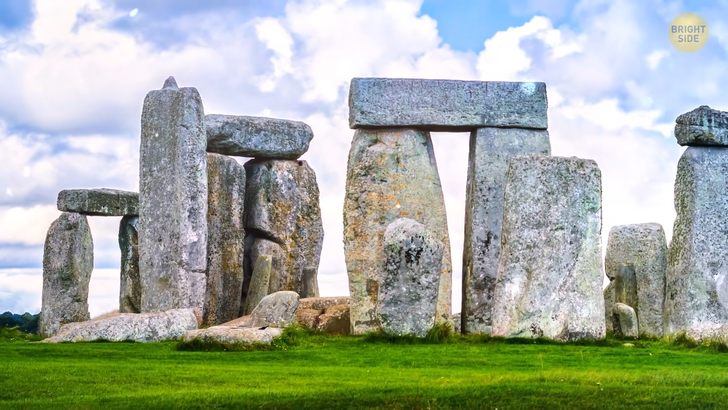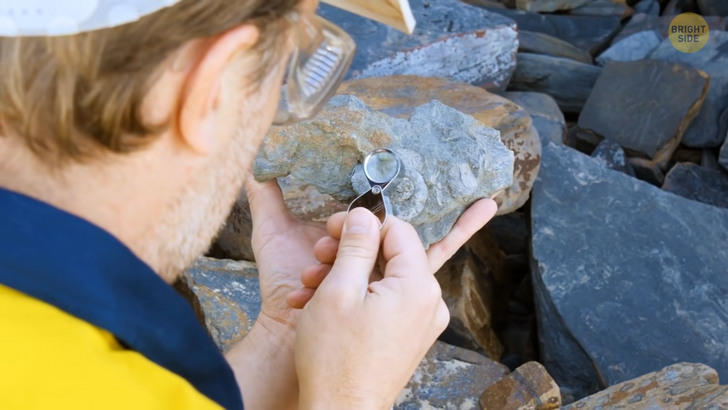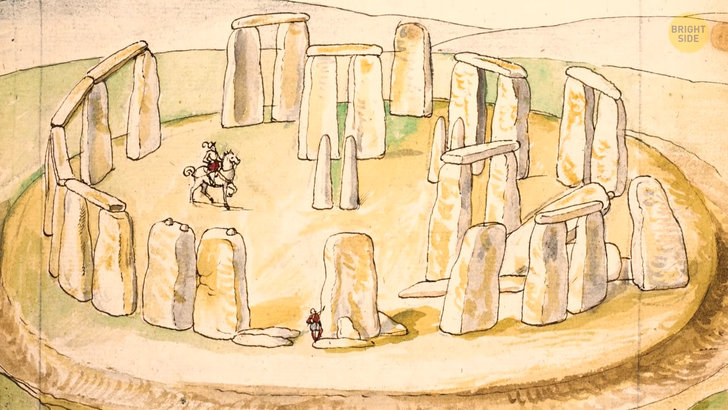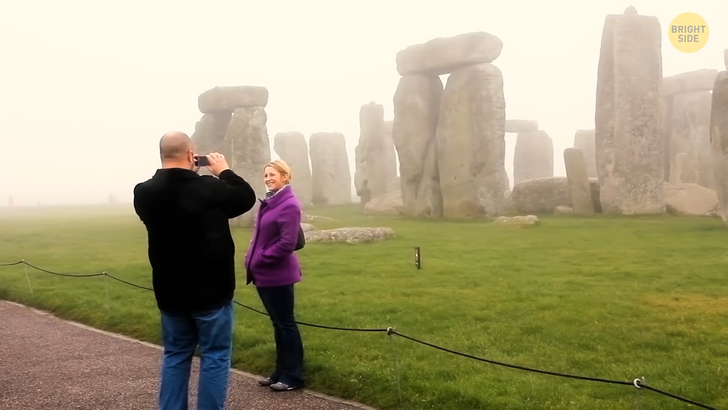I Left My Fiancée Because of Her Insulting Request Regarding My Daughter

The majority of us have believed for a really long time that Stonehenge, one of the most iconic monuments in the world, was an ancient calendar because of its alignment with the summer and winter solstices. But no one could figure out how it really worked. Now, a team of researchers has come out with another study!
It turns out that Stonehenge could have functioned like the solar calendar. It’s a similar principle to the solar calendar ancient Egyptians used to have, the one based on a year composed of 365.25 days. Each of the stones from this big mysterious sarsen circle represented one day within a month. Sarsens are what we call these large boulders.

It’s actually a perpetual calendar where people could track every winter solstice sunset. That way, those who lived near Stonehenge — which is today in Wiltshire, UK — could keep track of the days and months of the year. We all now understand this mysterious calendar system because of this interesting discovery in 2020. The team has identified the source of 50 of the 52 sarsens that make up the iconic stone circle we all know about.
They analyzed the chemical composition of these sarsens and traced their origins to the West Woods in Wiltshire, which is about 15 miles away from the monument. Not only did these 50 sarsens come from the same source, but they were also placed in their current position at approximately the same time. They make the outer circle of Stonehenge, together with a horseshoe-shaped inner ring.
Near the center of the monument, there are smaller rocks, known as bluestones. The team traced the origins of the bluestones all the way to Wales. They also discovered that the sarsens share a common chemistry — over 99 percent silica, with trace elements. 2 sarsens were different from each other and also different from the main cluster.

These sarsens were arranged in three different formations at Stonehenge. 30 of them formed this huge stone circle that dominates the monument. Four “station stones” ended up in a rectangular formation outside the circle, while the rest, located inside the stone circle, were constructed into five trilithons. A trilithon is when you have two vertical stones with a horizontal lintel at the top.
30, 5, and 4 are pretty interesting numbers in the context of this calendar system. The 30 uprights that are spread around the main sarsen ring could represent days of the month. If you multiply that by 12, you get 360. Add on 5 more, those from the central trilithons, and the result is 365. And to really adjust the calendar to match a solar year, you need to add one extra leap day every four years, right? The team believes the ancient people used these four station stones to keep track of this part. So, in this system, they paired the summer and winter solstice every year with the same pair of stones.
Ancient people started building Stonehenge about 5,000 years ago, and it took more than 1,000 years to finish the work. But the Stonehenge you see today is not the complete, original version from the beginning. People have broken and taken away many of its old bluestones and sarsens. The entire structure also changed over time since there were generations and generations — 180 of them to be precise, that passed since the beginning of Stonehenge — who would participate in the building and rebuilding of it.

People created Stonehenge in four stages. They first built a circular enclosure that stretched over 330 feet (100 m) in diameter and went around 56 pits [Aubrey Holes]. A high bank flanks the ditch of the enclosure, while there’s a low bank on the outside. Some theories even say this part was some form of a communal cemetery. Later, in the second stage, builders added a horseshoe of sarsen trilithons.
In the third stage, they constructed a ceremonial avenue that was nearly 2 miles (3 km) long. It possibly traced the path of the bluestones people moved from the Aubrey Holes to the Q and R holes — a double arc that these bluestones have been arranged into. At this stage, builders also reorganized the entrance stones and recut the main enclosure ditch. During the fourth stage, the stones were broken, and builders etched carvings into the sarsens.
Later, the bluestones ended up being modified again. Builders didn’t leave any written records about how they managed to drag these heavy stones to the site and get them to stand so perfectly upright. But, there are theories that say their techniques were more closely associated with woodwork than masonry. They made mortice holes and protruding tenons because they wanted to slot these stones together, and they used tongue and groove joints to do that. When they dug the hole for the stones, they placed timber poles at the back of the hole that were used as brace support.

Then they moved the stone into a position and hauled it upward with ropes. They packed rubble into the hole to make sure the stone stayed in place. A pre-industrial farming society put this fascinating monument together using only tools made of stone and bone. Not even the wheel had been invented yet. This unusual formation is also known as “ringing rocks.”
The stones you can see at Stonehenge have some pretty odd acoustic properties. When you strike them, they produce a loud clanging sound. That could be one of the reasons why people bothered to transport them over such a long distance in the first place. In some ancient cultures, people believed these rocks contained healing powers. It’s a really popular location that attracts over a million visitors a year. When it first opened to the public, visitors were allowed to walk among the stones. They could even climb on them, as there weren’t any restrictions.
Until the late 19th century, visitors would regularly chip off pieces of the rock to take them home as souvenirs. They would also engrave their initials into the stones. They camped within the circle and dug fire pits, not realizing that digging pits could seriously undermine the stability of the entire monument. Over time visitors have encountered more and more restrictions until the monument was finally roped off in 1997 because of the serious erosion of the stones. That means if you want to visit, you can only view it from a distance unless you want to pay extra for the Stone Circle Experience — which can only be arranged outside of normal visiting hours.

Stonehenge originally had two entrances that led into the enclosure. There was a wide one to the northeast and one that was a bit smaller and located on the southern side. If you look at it today, you can see there are many more gaps. This is mostly because of tracks, made later, that once crossed the monument. The ground within Stonehenge has been severely disturbed, and it wasn’t just about random visitors digging fire pits.
There was a group of people who dug a large, deep hole within the stone circle in the 17th century because they were looking for treasure. Then there was Charles Darwin, who also did some digging because he was studying earthworms in the area. He wanted to know how these worms could impact objects in the soil over time. He observed how a fallen stone there had sunk deeper into the ground and realized that it was happening because of the activities of these tiny creatures who churned through the soil all the time.

In 1963, there was a theory that Stonehenge had been built as some sort of a “computer” that predicts solar and lunar eclipses. Later, some proposed it was actually constructed as a monument to ancestors that had passed away. This theory says the permanence of its stones represented the eternal afterlife. The average sarsen you can find there weighs 25 tons, while the biggest one [the Heel Stone] weighs around 30 tons. If you want to get an idea of how massive these stones really are, you can go behind the visitor center in the outdoor gallery to check out a replica sarsen stone.
It’s a true copy of a freestanding upright from one of the trilithons that are located in the inner horseshoe of the monument. There are five Neolithic Houses at Stonehenge, based on real archaeological evidence of houses found in that area [Durrington Walls]. Each of them had stake-built walls and a chalk floor. Some even had furniture. There was also a lot of trash discovered, which means people in this area used to like celebrations and feasting. Research has shown that people lived in these houses for 50–100 years, around 4,500 years BCE — which was the time when builders brought the sarsen stones to Stonehenge.

During the time they were building Stonehenge, generations of people went through major changes themselves — from the Stone Age to the Early Bronze Age. They were no longer as static and isolated.
They started to travel and trade more, which means they communicated way more than their ancestors — even internationally. This is how they could’ve spread the word about Stonehenge — and it’s also when the whole mystery and fascination with the monument began.











